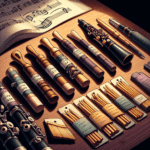Choosing the right clarinet reed strength is key for achieving great sound and playability. Your reed selection depends on various factors, and understanding these can improve your playing experience. This guide will walk you through the ins and outs of clarinet reed strength, helping you find the best match for how you play.
What is Reed Strength?
Reed strength refers to how stiff the reed is, which affects how it vibrates when you blow air through it. Clarinet reeds typically come in strengths ranging from soft (1-2) to hard (4-5). Each strength interacts differently with the clarinet mouthpiece and affects your playing technique.
Types of Reed Strength
Here are the standard strength categories:
- Soft Reeds (1-2): These are easier to play, making them great for beginners still working on their embouchure and breath control. Soft reeds allow quick articulation but might not project sound as well for advanced playing.
- Medium Reeds (3): This is what most intermediate players choose. A medium reed gives a good balance of resistance, allowing for both flexibility and control without too much effort.
- Hard Reeds (4-5): These provide more resistance, suiting experienced players who can handle the extra effort. Hard reeds are often used for a more focused sound and better control over dynamics.
How Reed Strength Affects Tone and Playability
Your choice of reed strength significantly impacts your clarinet's tone and how it feels to play. Let's look at how different strengths affect your playing:
| Reed Strength | Tone | Playability |
|---|---|---|
| Soft Reeds | Warmer tone, inviting for new players | Easier to play, quick articulation |
| Medium Reeds | Balance of warmth and projection | Good control and flexibility |
| Hard Reeds | Excellent projection, brilliant upper register | Requires more effort, may cause fatigue |
Factors Influencing Your Reed Choice
When deciding which reed strength is best for you, think about these factors:
- Playing Level: Beginners often do better with softer reeds as they build their embouchure and develop sound quality. As players improve, they might prefer harder reeds.
- Musical Genre: Different music styles might benefit from different reed strengths. For example, jazz players often like softer reeds for flexibility, while classical musicians might prefer harder reeds for better control over dynamics and tone.
- Personal Comfort: Every player is unique. You might prefer a certain strength simply because it feels more comfortable and plays well for you.
Testing Different Reed Strengths
The best way to find your ideal reed strength is by trying different ones:
- Buy a Variety: Get several reeds in different strengths, including different brands. Reeds from Martin Freres, known for their quality, can be a good place to start.
- Play Scales and Arpeggios: When testing reeds, use scales and arpeggios to check control, response, and sound quality across your instrument's full range.
- Consider Your Experience: As you try different reeds, notice how your skill level works with different strengths. Adjust your choice as your playing improves.
Taking Care of Your Reeds
Looking after your reeds is just as important as picking the right strength:
- Moisten Before Play: Always make sure your reed is wet enough before playing. A dry reed won't vibrate well and can sound dull.
- Clean Regularly: After each use, clean your reeds and mouthpiece to prevent bacteria growth and keep the sound quality good.
- Store Properly: Keep reeds in a reed case to protect them and maintain their shape. Don't expose them to very high or low humidity or temperatures.
The Importance of Good Instruments
Your instrument plays a big role in getting the best sound. High-quality clarinets from brands like Martin Freres are made to work well with your reed choice and improve your overall playing experience. A well-made clarinet helps you get the most out of your reeds, giving you clear and resonant sound.
As you explore different reeds and how to care for them, remember that finding the right balance between reed strength and your playing style is key. Regular practice, trying new things, and exploring different types of music will help you grow as a clarinetist.
Be patient as you try different reeds. Keep experimenting and thinking about how you're improving to find the combination that works best for you. With practice and focus on quality, you can develop a sound that's beautiful in any musical setting.







